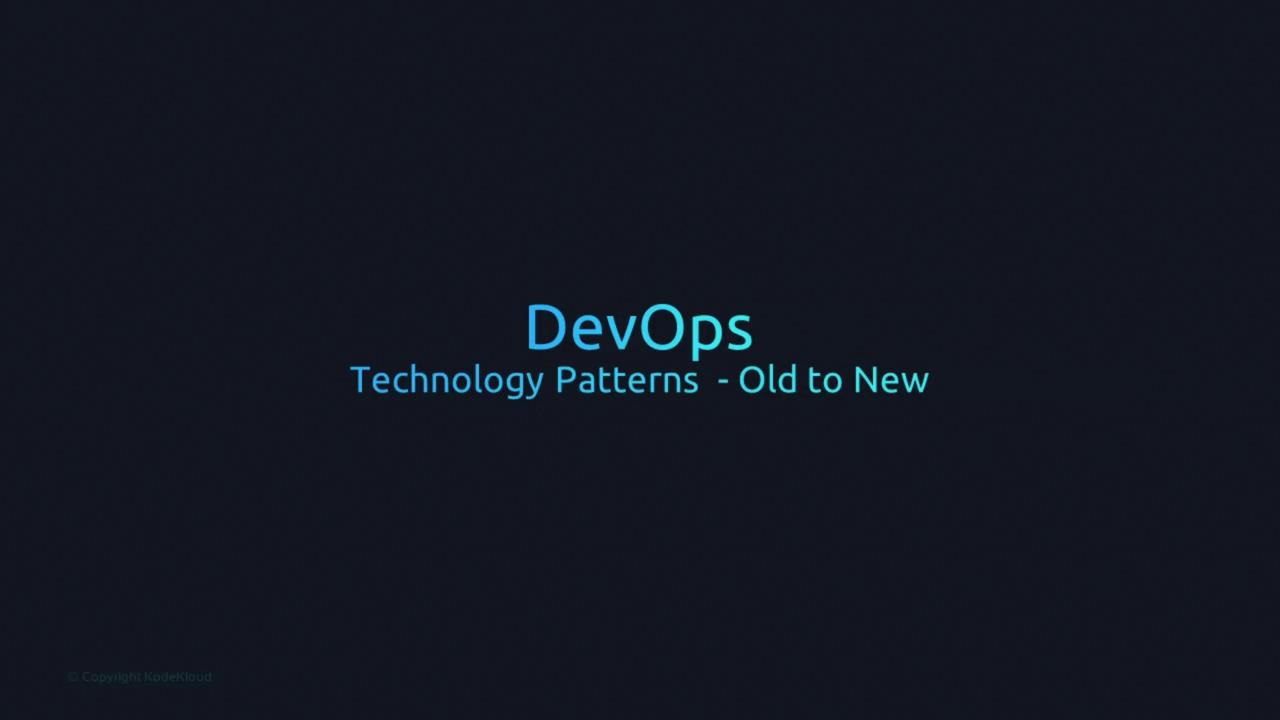Fundamentals of DevOps
ProductTechnology
Technology Patterns Old to New
DevOps tooling plays a vital role in fostering a robust DevOps culture and streamlining software delivery. In this article, we explore several widely adopted design patterns in DevOps and demonstrate how modern tooling supports these methodologies. Understanding these patterns can significantly enhance your development and deployment processes.

In the sections below, we dive into key concepts including Continuous Integration, Continuous Delivery, Continuous Deployment, Microservices, GitOps, and Platform Engineering. While this list is not exhaustive, it covers the essential practices that underpin effective DevOps workflows.
Continuous Integration
Continuous Integration (CI) is a cornerstone of DevOps that emphasizes the frequent integration of code changes into a central repository. Each integration triggers an automated build and test sequence to ensure that every feature addition or bug fix is in a deployable state. The aim is to catch errors early, maintain high-quality code, and reduce integration issues.
Developers merge their changes into a shared repository where automated builds and tests are executed. If any tests or build processes fail, the changes remain unmerged, providing immediate feedback to the developers.
Key Benefit
Continuous Integration minimizes integration challenges and ensures that the main branch consistently remains production-ready.
Continuous Delivery
Building on CI, Continuous Delivery (CD) extends the automated process to multiple testing phases before a release. After code changes have been merged into a designated releasable branch, an automated pipeline carries out comprehensive testing across various environments. This guarantees that the application remains in a deployable state at all times.
The CD process automates tasks from testing to deployment packaging, ensuring consistency and reducing manual intervention right up to the point of production readiness.
Continuous Deployment
Taking automation even further, Continuous Deployment automates the entire release process to production. In this practice, once code changes pass all tests and validations in the CD pipeline, they are immediately deployed to production without human intervention.
This approach ensures that the live environment always reflects the latest changes and that issues are promptly addressed using automated monitoring and rollback strategies. However, organizations must have rigorous controls in place to adopt Continuous Deployment effectively.
Implementation Note
Before implementing Continuous Deployment, ensure you have robust monitoring and rollback procedures, as the process fully automates production releases.
Microservices
The microservices architecture involves breaking down monolithic applications into smaller, independent services that focus on individual business capabilities. Each microservice—be it for reporting, inventory management, or customer profiles—can be developed, tested, and deployed in isolation without impacting the entire system.
This modular design promotes agility by enabling rapid development and streamlined updates across different services, all communicating via well-defined APIs.
GitOps
GitOps leverages Git as the single source of truth for the entire software delivery lifecycle, from initial code commits to production deployments. By storing application code and infrastructure configurations within Git repositories, any change is initiated via a commit that triggers automated build and deployment processes.
This methodology reduces human error, ensures version-controlled changes, and simplifies both rollback and forward deployment, enhancing the overall reliability and security of the software delivery process.
Platform Engineering
Platform Engineering represents the evolution of DevOps principles, integrating Continuous Integration, Continuous Delivery, and GitOps into a unified internal developer platform. Utilizing cloud-native tools, containers, and orchestration frameworks like Kubernetes, this approach empowers developers with self-service capabilities for building, testing, and deploying applications.
By streamlining service orchestration and reducing operational overhead, platform engineering enhances the developer experience and accelerates the delivery process. This convergence of various practices helps bridge the gap between development and operations, fostering efficiency and accelerating innovation.
These common design patterns are fundamental to establishing a streamlined and efficient DevOps process. Whether you are enhancing your Continuous Integration pipeline or moving towards a comprehensive platform engineering approach, understanding these concepts is essential for improving your software delivery routines.
Thank you for reading this article.
For more insights into modern DevOps practices, consider exploring additional resources:
Watch Video
Watch video content